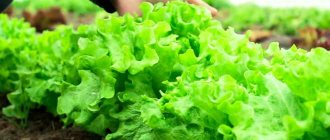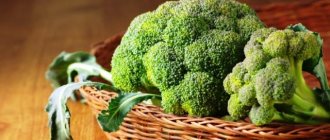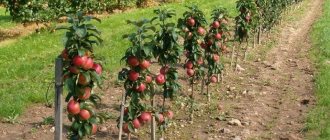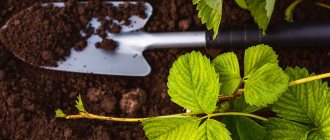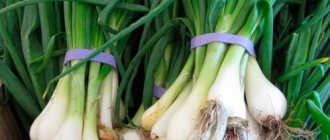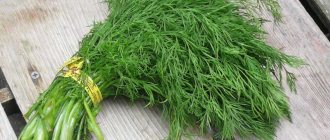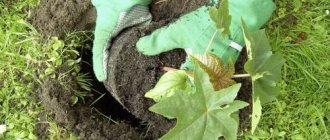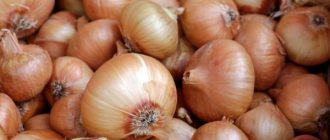What is Chinese cabbage?
Chinese cabbage (Brassica rapa pekinensis) or petsai (English pe-tsai) is a biennial plant. In culture it is grown as an annual vegetable. During the season it is possible to obtain three harvests. This vegetable plant appeared on the Russian market not so long ago - 7-8 years ago. At first, “Beijing” was exotic for Russians, but today it is a popular food product that is in stable demand regardless of the season.
Chinese cabbage is an important culinary product. It has a valuable nutritional composition, soft structure and juiciness, and goes well with meat, fish, and vegetables. “Pekingka” is included in a variety of dishes - salads, soups, cabbage rolls, etc.
Cabbage ripens in the fall, but when grown in a greenhouse it grows year-round. In the warm season, when greenhouse farms do not spend money on heating and competitors appear in the form of seasonal vegetables, the price of Chinese cabbage falls.
Botanical description
The leaves are juicy and tender, collected in a head or rosette. Color – green or light yellow, depending on the variety. Each leaf has a midrib and the edges are wavy or jagged. The underside of the leaves is pimply. Cylindrical heads of cabbage have oblong-shaped leaves. In cross section, the heads of cabbage are yellowish-green, whitish-green, yellowish-white - the color varies.
The main feature and difference between Peking cabbage and other types of cabbage is the absence of a stalk.
Varieties of Chinese cabbage for growing at home
Like any crop, types of petsai differ in terms of ripening. There are varieties:
- Early ripening;
- Mid-season;
- Late ripening.
Depending on the time of harvest, certain rules are followed when growing crops.
To make the right choice, you need to familiarize yourself with the distinctive characteristics of the variety.
Early ripening
| Variety | Description |
| "Vesnyanka" (Leaf) | Small heads of cabbage weighing 300 g. Early ripening variety, ripens in 30 days. Resistant to color fade. |
| "Victoria" (headed) | Hybrid with large heads of cabbage up to 2 kg. |
| "Lenok" (Salad) | Intended for indoor use only. Can be grown on a windowsill. The leaves have a slight waxy coating, the rosette weighs 300 g. |
| "Khibinskaya" (Half-headed) | Bright green nutritious leaves and a juicy small head of cabbage. In open ground it ripens in 45 days, in greenhouses and on the windowsill in 25 days. |
Mid-season
| Variety | Description |
| "Cha-cha" (Leaf hybrid) | Not afraid of transplants! Can be planted in spring and summer. |
| "Glass" (headed) | The leaves are light yellow. It is used only fresh and is not suitable for preparations. |
Late ripening
| Variety | Description |
| "Russian size" (Kokhanny) | Very resistant to stemming. The weight of the heads of cabbage reaches 4 kg. |
| "Nika" (headed) | Universal use. In addition to fresh use, it is used for fermentation. |
An important criterion when choosing a variety is its resistance to bolting. When the temperature drops, the "Peking" shoots shoots and blooms, which significantly reduces the yield.
Of the modern varieties, the hybrids that best resist bolting are:
- Custar F1;
- Optico F1;
- Victoria F1;
- Gilton F1;
- Miraco F1.
The second parameter that requires attention is the method of use. If the variety is intended for fresh use, then it will not be possible to store it. It must be recycled immediately.
Hybrids with good shelf life can be stored for several months in a prepared room.
Spread of culture
“Beijing” gradually spread beyond the Celestial Empire - first, through northern China and the Korean Peninsula, it came to Japan. In the 20th century, Japanese breeders developed many varieties and hybrids of Chinese cabbage - they were superior to their predecessors in early ripening, yield and taste.
When the “Beijing” hit the markets of Europe and America, it caused a real sensation. The excellent taste of this vegetable quickly captivated local consumers, and farmers rushed to grow new cabbage en masse. In Russia, Chinese cabbage has been known for about 10 years; now this vegetable continues to be actively introduced into domestic vegetable growing.
Popular varieties and hybrids of Chinese cabbage
Despite the fact that Chinese cabbage is less common in gardens than cabbage, cauliflower, or even broccoli, there are a sufficient number of proven varieties and hybrids of this crop that are suitable for growing in the middle zone.
Vorozheya
Vorozheya is a variety of Chinese cabbage used for salad purposes. It is recommended to use it fresh soon after harvesting.
This cabbage is characterized by fairly rapid ripening, high yield, and resistance to bolting.
| Productivity (kg per 1 sq.m.) | Head weight (kg) | Maturation (days) | Storage |
| 4-5 | 2-2,5 | 62-67 | Short term |
Tabaluga F1
This hybrid of Chinese cabbage is notable for its early ripening, excellent taste and resistance to diseases, including black spot and gray mottle.
The heads of cabbage of the hybrid Tabaluga F1 are stored for up to three months.
| Productivity (kg per 1 sq.m.) | Head weight (kg) | Maturation (days) | Storage |
| 2,5-3 | 0,75-2 | 45-60 | Short term |
Benefits, harms and composition
Beijing cabbage is valued for its low calorie content. 100 g contains only 14 kcal - this is half as much as cauliflower and white cabbage. Nutritional value:
- proteins – 31.5%;
- carbohydrates – 64%;
- fat – 5%.
Beijing contains a huge amount of useful substances, especially many of them:
- vitamin C – participates in tissue regeneration and accelerates recovery from viral infections;
- vitamins A, E, K, B2, B6, B9;
- mineral salts;
- ascorbic, nicotinic, folic acid - the latter is especially useful for the body of women;
- microelements – iodine, zinc, manganese, iron, fluorine, selenium, potassium, calcium;
- lutein – helps maintain visual function;
- natural sugars - they are safe for the figure;
- fiber – removes toxins and waste.
Beneficial features:
- improves the functioning of the cardiovascular system;
- increases immunity;
- strengthens the nervous system,
- helps cope with stress and migraine attacks;
- improves the functioning of the gastrointestinal tract;
- promotes the formation of blood cells - prevents anemia;
- lowers cholesterol.
Contraindications:
- pancreatitis;
- increased acidity;
- peptic ulcer.
Breastfeeding women are advised to use Chinese cabbage with caution. In general, this vegetable should be consumed in reasonable quantities. Overeating can lead to stomach upsets.
What are the benefits of Chinese cabbage?
This culture has many valuable properties. She:
- contains twice as much vitamin C as white cabbage;
- retains beneficial properties during storage;
- increases immunity;
- eliminates swelling;
- normalizes blood pressure;
- contains only 16 kcal per 100 g!
Chinese cabbage prepared for pickling
Other names for “Beijing cabbage” are Chinese cabbage, cole slaw, coleslaw, petsai. In English-speaking countries, it is also often called Napa cabbage.
- Which cabbage makes the most delicious salads?
This cabbage salad does not look like its white cabbage “sister”, but it makes the most delicious salads!
The best predecessors
Chinese cabbage is recommended to be grown after legumes and grains. The best precursors for “Beijing” are crops after which the soil retains a sufficient amount of nutrients.
Favorable predecessors:
- tomato;
- potato;
- zucchini;
- cucumbers;
- onion;
- carrot.
It is not recommended to plant Chinese cabbage in areas where crops with which it has common pathogens grew. Undesirable predecessors are other types of cabbage and beets.
How to plant Chinese cabbage for seedlings?
Seeds for seedlings begin to be sown 30 days before planting in the ground or in a greenhouse. To get an early harvest, seeds are sown in late March or early April. To obtain seedlings for cabbage, which will be intended for winter consumption, the seeds are sown at the end of June.
Preparing seeds for planting
If the seeds are purchased at a seed store, they do not need special processing. They do not need pre-sowing treatment; they can be immediately planted in the substrate. If homemade seeds are used for sowing, they must be germinated to identify non-germinating ones.
How to germinate Peking seeds:
- The seeds are laid out between layers of cloth moistened with water.
- Place the seeds in a warm place for germination.
- After 3-4 days, healthy seeds begin to sprout. Sprouted specimens are planted in containers filled with substrate. After 4-5 days, shoots appear.
Seeds obtained independently are recommended to be treated with an antifungal compound. The seed is immersed in hot water (50°C) for 15 minutes, and then immersed in cold water for a couple of minutes. Before planting, the seeds are dried.
Preparing the soil for sowing
Seedlings are grown in loose soil. One of the best options is coconut substrate - it is prepared from the dried and crushed remains of the surface of coconuts. On this loose and breathable substrate it is possible to grow selected seedlings, healthy and strong. It is recommended to mix the substrate with humus in a ratio of 2:1. To improve the nutritional quality of the substrate, ash is added to it.
The second option for obtaining a loose and nutritious soil mixture for growing seedlings is a sod-peat mixture. The ingredients are mixed in equal parts.
Sowing seeds for seedlings
Chinese cabbage does not tolerate any transplantation well. To avoid picking, seeds are sown not in common containers, but in separate containers. The best option is peat pots or cassettes. Its advantage is the possibility of planting in the ground along with seedlings. This approach allows you to avoid the stress that accompanies cabbage seedlings during transplantation.
Sowing order:
- 2-3 seeds are planted in each pot to a depth of 0.5-1 cm.
- Watering the crops.
- Place in a warm place. Crops do not need lighting during this period.
- When the shoots appear, the pots are moved closer to the light.
Seedling care
Seedlings need a lot of light, the optimal temperature for growth and development is approximately +10°C.
Care procedure:
- Regular watering. The substrate is moistened as needed. Warm, settled water is used for irrigation.
- Loosening. After watering, the soil is carefully loosened.
- Thinning. When the first true leaves appear on the seedlings, the excess plants are removed. There should be only one, the strongest and healthiest seedling left.
The seedlings are ready for planting when they have 4-5 true leaves. This occurs approximately 30 days after sowing. Watering is stopped 3-4 days before planting in a permanent place,
Seedling care
After the first shoots appear, the seedlings are moved to a well-lit windowsill. At this stage of development, the room temperature must be maintained at +7...+8 degrees. A loggia or glazed balcony is best suited for this.
Further care of the seedlings consists of periodic watering with warm, settled water. The soil should be moistened as the top layer of the nutrient substrate dries. After carrying out these procedures, it is necessary to carefully loosen the soil, which will prevent moisture stagnation.
When the seedlings have two or three true leaves in the pot, leave one of the healthiest plants and pinch out the rest.
Dive
We have already said earlier that Chinese cabbage seedlings do not tolerate transplantation well, so the seeds are sown immediately in separate containers. This allows you to bypass the dive process.
How to transplant Chinese cabbage seedlings into open ground?
If the seedlings are grown in peat pots, then they do not have to be removed - the seedlings are placed in the holes along with the “container”. The containers will mix with the soil over time, giving the plants additional nutrition.
8-10 days before the intended planting, the seedlings are hardened off and taken outside. The hardening time gradually increases to one day - after which the seedlings are planted.
The area where the seedlings are to be planted is prepared in advance, in the fall or spring. The soil is dug deeply, removing plant debris. During autumn digging, humus or compost is added.
Seedlings are planted according to several schemes:
- In order for the heads of cabbage to grow large, the seedlings are planted according to the scheme 35x35 cm or 50x50 cm.
- If cabbage is grown for salad leaves, you can use a 30x25 cm pattern.
Disembarkation order:
- Before planting seedlings, prepare depressions corresponding to the root system of the seedlings.
- Superphosphate, urea and wood ash are placed in each hole - a tablespoon.
- The peat pot is carefully placed in the recess and sprinkled with soil.
- The planted plant is watered at the root. Water for irrigation should be warm.
During the first 2 weeks of planting, it is recommended to cover it with film at night. In the morning the film is removed.
In order to form high-quality heads of cabbage, daylight hours are artificially reduced for planted seedlings.
How an experienced gardener plants Chinese cabbage seedlings in open ground is shown in the video below:
How to grow Chinese cabbage in the garden
Caring for Chinese cabbage
How to grow Chinese cabbage correctly? Planting and caring for Chinese cabbage requires following some simple rules. For the first time after planting seedlings in the garden bed, it must be covered with non-woven material. Why is this being done?
- Pelargonium royal
- Firstly, in order to protect young plants from frost or sudden temperature changes.
- Secondly, to shade them from direct sunlight, which can cause harm to them during the rooting of seedlings.
- Thirdly, in order to protect the root system of Chinese cabbage from rotting during periods of heavy rain.
- Fourthly, to hide the seedlings from the cruciferous flea beetle, the most common pest of cabbage crops.
- Fifthly, so that Chinese cabbage, covered at night, forms heads faster.
Two weeks after planting Chinese cabbage in open ground, the area should be mulched with straw or peat. There is no need to hill up Chinese cabbage, but it is necessary to carefully loosen the soil around it, while simultaneously removing weeds from the bed. Otherwise, the measures for caring for Chinese cabbage are the same as for any other type of garden cabbage - watering, fertilizing, protection from pests and diseases.
Watering Chinese cabbage
Peking cabbage in the garden requires regular and abundant watering - once a week with warm water. Water is poured under the root so that it does not fall on the leaves. Watering is carried out early in the morning or after sunset. To prevent moisture from evaporating from the soil so quickly, do not forget to mulch the bed - this way you will have to water the Chinese cabbage, loosen the soil around it, and remove weeds much less often.
Feeding Chinese cabbage
The first feeding of Chinese cabbage is carried out two weeks after the seedlings are planted in the ground, and it should consist of organic fertilizers. For example:
- one part mullein dissolved in 10 parts water;
- one part chicken manure dissolved in 20 parts water;
- one part herb infused with 9 parts water.
The consumption of organic fertilizer is 1 liter of ready-made solution per plant.
Chinese cabbage planted in the spring is fertilized three times during the growing season, and that planted in the summer - only twice.
In addition to the described nutritional compositions, foliar feeding has a good effect on the formation of Chinese cabbage forks: 2 g of boric acid is dissolved in 1 liter of hot water, after which another 9 liters of cold water are added to the solution. This composition is used to treat Chinese cabbage leaf by leaf. It's better to do this in the evening.
Chinese cabbage has bloomed
How does Chinese cabbage grow? Chinese cabbage produces heads of cabbage only in short daylight hours. In areas with warm climates this is early spring and late autumn. After seed germination, Chinese cabbage first forms a rosette of leaves, and only after accumulating a certain amount of protein, sugars and vitamins does the plant begin to form an elongated head weighing 1-2 kg or more, after which Chinese cabbage very quickly begins to bloom. As soon as 10 leaves are formed, flower primordia are formed in the central bud, and the head produces an arrow.
What can cause Chinese cabbage to bolt before it forms heads? Long daylight hours and high air temperatures. That is why the middle zone is ideal for growing Chinese cabbage, and growing Chinese cabbage in Siberia is much easier than in the southern regions.
What to do if Chinese cabbage blooms? Study the rules of growing crops, find your mistakes, analyze them and not repeat them next year. Don't despair: negative experiences are sometimes more valuable than positive ones. In any case, you now know how Chinese cabbage blooms.
Beijing cabbage in a greenhouse
In order to grow Chinese cabbage in a greenhouse, it is necessary to maintain a certain temperature regime and maintain the required air humidity. Grow cabbage at temperatures no higher than 15-20 ºC, since higher temperatures can lead to the formation of flower stalks and various diseases. The optimal air humidity for Chinese cabbage grown in a greenhouse is 70-80%.
You can sow Chinese cabbage seeds in protected soil or plant seedlings in a greenhouse. Technical ripeness of cabbage grown from seedlings occurs on average a week earlier than that grown in a greenhouse from seeds. The requirements for greenhouse soil are the same as for soil in a garden bed. Peking cabbage is fertilized in a greenhouse with organic matter or mineral nitrogen fertilizer.
Growing by seeds
The seedless method avoids the stage of plant transplantation, which simplifies the cultivation of Chinese cabbage. Seeds are usually planted in open ground to obtain a late harvest - for the autumn-winter use of heads of cabbage.
Planting dates for Chinese cabbage
The timing of planting Chinese cabbage depends on the climatic characteristics of the regions and weather conditions. Sowing begins as soon as the soil warms up.
When choosing the sowing time, take into account the time of the first frost and the ripening time of the variety. If, for example, the first frosts appear in early September, then the late varieties will not have time to ripen. But in the southern regions you can easily grow late-ripening varieties.
When sowing seeds directly into the ground, three sowing dates are recommended:
- April 25-May 5;
- May 20-June 1;
- at the beginning of August.
In June and until mid-July, the vegetable is not sown - such plantings develop flowering. The optimal temperature for the development of “Beijing” is from +16 to +22°C. Table 2 shows the timing of sowing seeds for different growing methods (for regions with a temperate climate).
table 2
| Growing method | Early ripening varieties | Mid-season | Late ripening |
| Rassadny | mid-March-mid-April | early April | they don't imprison you |
| Sowing in open ground | May | May | end of July – first ten days of August |
| Sowing in greenhouse soil | April | April | mid-August |
Planting scheme
When sowing Chinese cabbage directly into the ground, precision is needed - the seeds are immediately distributed into their holes. The distances between adjacent recesses depend on the variety:
- for early varieties - the interval between adjacent holes is 30-40 cm;
- for late varieties – 45-50 cm.
If for some reason the plantings turned out to be too frequent, perhaps the gardener wanted to play it safe and sowed the seeds too often, they will have to be thinned out.
Early ripening leafy varieties are sown at intervals of 10 cm. When the plants have leaves, they are torn off for salads - this frees up space for other plants.
Sowing seeds in the ground
The order of sowing in open ground:
- On the prepared beds - dug up and fertilized - markings are made in accordance with the planting scheme.
- Sowing can be done in two ways - in prepared furrows or in single holes. The best option is to make a small ridge, and in it there are holes at intervals of 25-30 cm. The seeds are sown in the furrow more densely - at a distance of 10 cm. All excess seedlings are then removed.
- Place several seeds in each hole - 2-3 pieces are enough. Planting depth – 1.5 cm.
- The planted seeds are sprinkled with soil and lightly compacted with the palm of your hand.
- After a couple of weeks, the seedlings are thinned out, leaving the best sprout.
Experienced gardeners advise covering the sprouts with plastic bottles with open lids so that the tender seedlings are not attacked by cabbage grass, cruciferous flea beetles and slugs.
The nuances of growing Chinese cabbage
Before planting nutritious cabbage, you need to familiarize yourself with some of the subtleties of agricultural technology. Beijing lovers will need:
- Choose the variety wisely . The main criteria that people pay attention to when choosing are the ripening period and climatic conditions for growing the variety.
- Follow the rules of crop rotation . "Beijing" grows well on the windowsill after planting garlic and onions. But the predecessors of one type of cruciferous crop are undesirable. They are affected by the same diseases and pests that can successfully survive in the soil.
- Do not replant plants unnecessarily . It is better to immediately sow the seeds in a permanent place. The plant is difficult to take root if it is transplanted.
- Correctly calculate the time for sowing seeds . Chinese cabbage is an early ripening crop, therefore, if the requirements of agricultural technology are met, 2-3 harvests are obtained per season. If optimal conditions are created, cultivation can be almost year-round.
Petsai is a biennial plant, but at home it is grown as an annual.
Caring for cabbage in the garden
In order for Chinese cabbage to grow tasty and large, it is important to provide it with everything necessary during growth - protect it from adverse natural influences, water and feed it on time, save it from diseases and insects.
If the seedling method of cultivation is used, it is recommended to cover the young plantings with a special cloth - agrofibre or lutrasil.
Advantages of growing under cover:
- The shelter protects the cabbage from both cold and scorching sun. Young plants develop well at temperatures from +13 to +25°C; a favorable microclimate is created for them under the canvas.
- Protects roots from rot during the rainy season.
- Saves plants from cruciferous flea beetle.
Half a month after planting the seedlings, the beds are mulched - sprinkled with peat or chopped straw. This agrotechnical technique allows moisture to be retained in the soil and prevents the growth of weeds. Mulching allows you to do without hilling. Loosening is necessary only at the initial stage; when the plants grow, you can do without loosening.
Watering
For full development, the crop requires regular watering. Moisten the cabbage generously. Recommended frequency is once a week. For irrigation, use warm water, pour it only at the root - water that gets on the leaves causes burns. The best time to water is in the morning or evening, after the sun has set.
Excessive moisture is unacceptable - it can cause root rot. Recommended soil moisture is 65%.
Feeding
Chinese cabbage is a fast-growing crop, it is very responsive to fertilizing. Thanks to 2-3 fertilizing, it is possible to significantly increase the yield. But it is important not to forget - this vegetable quickly absorbs nitrates, so during the growing season you should not apply a lot of mineral fertilizers. The frequency of fertilizing and its composition is in Table 3.
Table 3
| Fertilizing period | Compound | Note |
| 10-14 days after planting seedlings | Feeding options (per plant - 1 liter of solution): - solution of mullein infusion - take 1 kg per bucket of water; - solution of infusion of bird droppings, per bucket of water - 0.5 kg; - infusion of nettle and herbs. | If the crop is planted in the spring, then this fertilizing is carried out three times. Plants planted in summer are fed 2 times. |
| 2 weeks after the first feeding | Complex fertilizer. | Add according to instructions. |
| 2 weeks after the third feeding | Organic matter is reintroduced. | The norms are the same as for the first feeding. |
To increase productivity, in parallel with root fertilizing, foliar fertilizing can be used. For example, such a solution - boric acid (2 g) is dissolved in 1 liter of boiled water. Take hot water, when the acid dissolves, add cold water - enough to make 10 liters. The resulting solution is sprayed onto cabbage in the evening.
The following video describes how to fertilize Chinese cabbage during the period of head formation:
Planting and caring for Chinese cabbage
- Planting: sowing seeds for seedlings - at the end of March or early April, planting seedlings in the garden - at the end of April or early May. Sowing seeds of late varieties in open ground - in July.
- Lighting: bright sunlight.
- Soil: light, loose, fertile, moderately moist, well-drained, neutral reaction. The best soil is loamy.
- Watering: regular: once a week in the early morning or after sunset.
- Feeding: two weeks after planting the seedlings with a solution of mullein, bird droppings or herbal tincture at the rate of 1 liter per 1 plant. Spring-planted cabbage is fertilized 3 times during the growing season, summer-planted cabbage - 2 times. Foliar feeding with boric acid solutions is popular.
- Reproduction: seed.
- Pests: spring cabbage fly, wavy flea beetle, harmful centipede, cabbage moth, moth, cutworm, bug and aphid, root and rapeseed secretive insects, rapeseed bug and flower beetle, mole cricket, turnip white moth, winter and garden cutworms, sprout fly, gamma cutworm, dark click beetle and wireworm, petiole mosquito, black and cruciferous flea beetles and slugs.
- Diseases: blackleg, black ring spot, tracheomycosis (fusarium wilt), fomoz (dry rot), vascular bacteriosis, mosaic, downy mildew, clubroot, white rot and alternaria.
Read more about growing Chinese cabbage below.
Features of growing in a greenhouse
The advantages of growing Chinese cabbage in a greenhouse are the ability to create optimal conditions for growth. Here it is possible to control the length of daylight hours, temperature and humidity. The best option is a heated greenhouse, in which you can grow Pekinka all year round.
Features of cultivation:
- Chinese cabbage can be used to compact tomato and cucumber plantings.
- For greenhouses, it is recommended to use early ripening hybrids with a ripening period of 40-50 days. Cabbage yield reaches one ton per hundred square meters. The best hybrids for growing in a greenhouse are Spring Jade F1 and Spring Beauty F1.
- The soil in the greenhouse should be light and fertile. Before sowing seeds, the soil is disinfected - treated with steam or watered with a solution of copper sulfate. This event is especially important if blackleg, clubroot or other cabbage diseases were previously noticed in the greenhouse.
- Sowing in the greenhouse begins in early March or even earlier. This is if the greenhouse is heated; when using unheated greenhouses, sowing is carried out later - at the end of March.
- In greenhouses, you can use any growing method - direct sowing of seeds or seedlings.
- Care in a greenhouse involves regular soil moistening, fertilizing and thinning.
Tips for growing Chinese cabbage at home
For those who have decided to start growing Chinese cabbage at home for the first time, some recommendations will be useful:
- Thickened planting of lettuce allows you to save space. When the plants have 9-10 leaves, they are thinned out one at a time. Rejected specimens are used for food.
- In summer, when it is very hot, cabbage is sown on the balcony or loggia. Agricultural technology, like on a windowsill.
- To limit the length of daylight in summer, place cabbage plantings on window sills on the north or east side of the room. In winter, it is better to plant cabbage on a south-facing window.
- Plant marigolds in large containers around the perimeter to improve the soil health and repel pests.
By following simple rules, you can get an environmentally friendly harvest of Chinese cabbage at home.
Diseases and pests
Peking cabbage, due to the short growing season, rarely gets sick. But there are plenty of people who want to eat its succulent leaves, these are:
- cruciferous flea beetle;
- aphid;
- slugs;
- cabbage butterfly caterpillars;
- cruciferous bug.
To prevent insect attacks, the following preventive measures are used:
- destroy weeds in a timely manner;
- seeds are sown on time and the plantings are covered with special cloths;
- observe crop rotation;
- plant onions, petunia, marigolds and other plants that repel pests nearby;
If the plantings are affected by the cruciferous flea beetle, they are sprinkled with a mixture of ash and tobacco dust mixed in equal parts. You can also treat cabbage with Fitoverm. If the lesions are severe, use Aktara and other potent insecticides.
Chinese cabbage can be affected by mosaic, clubroot, white rot, black leg, downy mildew, and tracheomycosis. For control and prevention, the following methods are used:
- sprinkled with wood ash - helps against powdery mildew, real and false;
- sprayed with “Binoram” - against bacterial rot;
- carry out pre-sowing treatment of seeds;
- preventing overwatering - to avoid blackleg, if the disease still affects the cabbage, use Fitosporin or Bordeaux mixture.
Pests and diseases of Chinese cabbage
Pests of Chinese cabbage
We have written about diseases and pests of cruciferous crops more than once, so there is no point in covering this topic in detail once again. Let us briefly recall that among the insects dangerous to the crop are the spring cabbage fly, the wavy flea beetle, the harmful centipede, cabbage moths, moths, armyworms, bugs and aphids, root and rapeseed secretive insects, rapeseed bugs and flower beetles, mole crickets, turnip moths, winter and garden cutworms, sprout fly, gamma cutworm, dark click beetle and wireworm, petiole gnat, black and cruciferous flea beetles and slugs.
Diseases of Chinese cabbage
Diseases, like pests, are common to all cruciferous crops, and we have given a detailed description of these diseases in our articles more than once.
Most often, cruciferous vegetables, including Chinese cabbage, affect:
- blackleg,
- black ring spot,
- tracheomycosis (fusarium wilt),
- fomoz (dry rot),
- vascular bacteriosis,
- mosaic,
- downy mildew,
- kila,
- bel,
- white rot
- and Alternaria.
Processing Chinese cabbage
In order to grow a quality product, it is necessary to follow the rules of crop farming and care. Usually this is enough to ensure that diseases and pests never appear on your site. But if suddenly the plant does get sick or pests start to take over the garden, you need to know what measures will help you get rid of these troubles.
- Tips for autumn planting beets
How to process Chinese cabbage? You need to fight fungal diseases with fungicides - Fundazol, Quadris, Skor, Ridomil, Topaz, Horus and other drugs of similar action. Plants cannot be cured of viral diseases (mosaic, black ring spot, for example); affected specimens must be removed from the site and burned so that the infection does not spread to healthy plants.
You can save yourself from pests by treating Chinese cabbage with insecticides, and in cases with arachnids, with insectoacaricides. It is unlikely that you will be able to get rid of them after one spraying, but no matter how many times you have to treat Chinese cabbage for pests, the last treatment must be carried out no later than a month before harvest.
And yet, the most reliable protection of the garden from diseases and pests is prevention. Follow crop rotation and agricultural practices, plant seedlings in open ground as early as possible, maintain the required interval between plants when planting, properly care for Chinese cabbage, remove all plant debris from the area after harvesting and dig the soil deeply.
Harvesting and storing Chinese cabbage
The collection time and shelf life of Chinese cabbage depend on the characteristics of the variety. Heads of cabbage are resistant to cold - they can withstand temperatures down to minus 5°C. Therefore, you don’t have to rush too much with cleaning.
Varieties planted in the second half of summer ripen in September. Late varieties are harvested in mid-October. Early ripening varieties are not used for winter storage, but cabbage planted in July lasts until the New Year.
Features of collection and storage:
- Harvest the heads of cabbage before frost. Frozen "Beijing" will not be stored.
- Over-ripening should not be allowed - overgrown heads of cabbage taste worse and do not last long.
- Do not water cabbage before harvesting.
- Only fully formed, healthy heads of cabbage that do not have rotten or damaged leaves are stored for long-term storage.
- Store the heads of cabbage in the basement or in the refrigerator. The heads of cabbage are wrapped in cling film or placed in bags. There is no need for tightness - some air should flow into the vegetable.
- Apples and other fruits should not be stored next to Chinese cabbage.
- To prevent condensation from forming under the film, the heads of cabbage are cooled for 3-4 hours before placing in packaging.
- If you do not pack the heads of cabbage, they will last no more than 10 days.
- Leaves can be frozen by first placing them in bags.
- To store the heads of cabbage in the cellar, they are pulled out by the roots. The cabbage is placed in boxes filled with moistened sand - the roots are sprinkled with it. Can be stored in bags - they are placed in boxes.
- The temperature in the cellar should be in the range from 0 to +3°C. Optimal humidity is 95%.
- Every two weeks, the heads of cabbage are examined for the presence of rotten and dry leaves, and, upon finding them, they are torn off.
Popular mistakes
The most common mistakes gardeners make:
- Incorrectly chosen time for sowing seeds leads to flowering. A similar effect is caused by incorrect timing of planting seedlings. Those who doubt success are recommended to use hybrids - their bolting is less developed.
- If the plantings are too dense, the plant does not receive proper nutrition and space for growth - this leads to flowering of part of the crops. To prevent this situation, it is necessary to maintain intervals when planting and thin out plants as necessary.
- When planting seedlings in cold soil, the plants stop growing. As a result, they do not have time to ripen, and they often throw away the arrows.
- Intense heat also encourages bolting. If the temperature rises above +22°C, you should take the time to create artificial shading for the plantings by throwing a special cloth over them.
- If cabbage is not removed in time, it will bloom.
Chinese cabbage blooming
Reviews
★★★★★
Vasily Egorovich, amateur gardener, Lipetsk region. I grow Pekinka in a greenhouse.
At first I tried to grow it in the usual way - in open ground. But it did not take root well, then the heads of cabbage sent out arrows and bloomed. Now I grow it in a greenhouse - there are no problems with bolting here. I plant different varieties – mostly early ones. ★★★★★
Polina Sh., 45 years old, Krasnodar region. I like the Victoria variety the most.
Its heads are perfectly stored, moreover, in winter they become even tastier. It has very juicy leaves - ideal for salads. It grows best in a greenhouse, but for me it ripens well in open ground, the main thing is to cover the seedlings with film after planting. Hide
Add your review
There are several important nuances in growing Chinese cabbage. The main condition for obtaining a harvest is timely sowing of seeds. It is worth confusing the timing, and instead of juicy heads of cabbage, you will get a flowering plant. Otherwise, the agricultural technology of “Beijing” does not stand out in any way - every gardener can grow this vegetable.
0
0
Copy link
